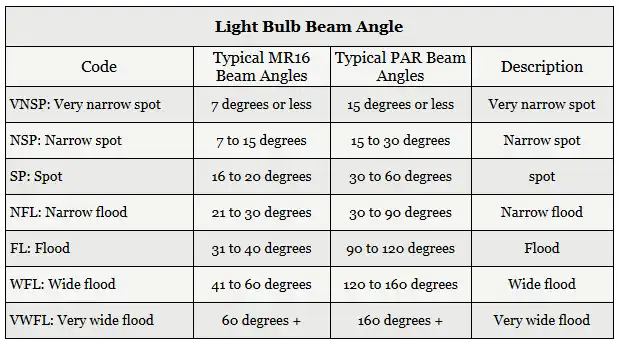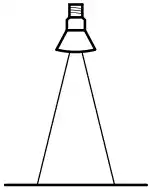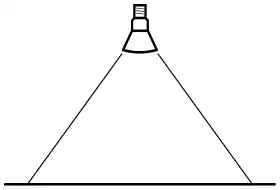
Switches | Outlets & Plugs | Ballasts | Replace Ballasts | LED Tube Lights | Troubleshooting | Basic Electricity | Misc Articles
About Privacy Policy Sitemap Copyright © 2024 Electrical101.com Terms of Use
Beam Angle
PAR Light Bulbs
Par (parabolic aluminized reflector lamp) are typically used in commercial and residential environments as headlights, recessed lights, and track lights. PAR bulbs have built-
MR Light Bulbs
MR (multifaceted reflector) are typically used in offices, retail, galleries, and residential, as recessed lighting, track lighting, or any other directional lighting. MR bulbs contain reflectors and optics. They were originally halogen bulbs, but now LED versions are available. MR bulbs are available in a wide variety of angles.
MRs are low voltage bulbs, usually 12 volts. An MR fixture contains a transformer to convert 120 volts to 12 volts. Low voltage bulbs carry a high current and have an intense light output for their size.
MR bulbs come in different diameter sizes. The number after “MR”indicates the diameter in 1/8 of an inch. The most common size is MR16 (16 eighths of an inch or 2 inches) and MR 11.
Descriptions and angles can vary with different bulb manufacturers
Beam Angle Spotlight
Beam Angle Floodlight
Certain light bulbs have a focused beam, projecting light at a certain angle. Beam angle is the degree of width that light emits from its source. Specifically, this is the angle between opposing points of the beam axis where the intensity drops to 50% of max intensity.
A spotlight has a narrow beam angle and a smaller circle of illumination. A floodlight has a wide beam angle and a large circle of illumination.
The illuminated area is determined by the beam angle and the distance between the bulb and the illuminated surface. Increasing the distance from the bulb to the surface, will result in a larger illuminated circle.
A narrower beam angle will normally result in a greater brightness or greater number of lumens for the same wattage, the light is concentrated on a smaller area. This is typically done though optics via reflectors or lenses.


Beam Angle

